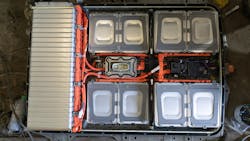How to Boost Power Density in Automotive Systems (Download)
The latest design architectures, especially in automotive power electronic systems, are critical in the success of any new hybrid electric vehicle (HEV) or electric vehicle (EV). A high-voltage vehicle power network is necessary with voltages of 60 V and higher, along with a traditional 14-V power network.
High-voltage vehicle power network architectures contain an electrical energy-storage system and a traction drive inverter. Some HEV and EV system architectures also may contain high-voltage power electronic systems using dc-dc converters to power a low-voltage network. Examples include electrical air-conditioning compressors, cooling water pumps, oil pumps, traction bus voltage stabilization, and ac-dc converters for unidirectional or bidirectional interfaces to vehicle grids.
